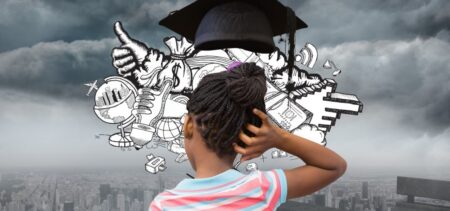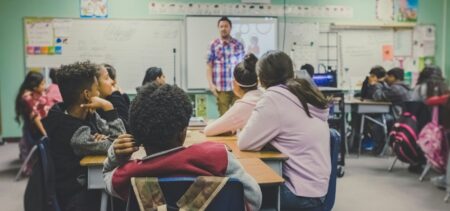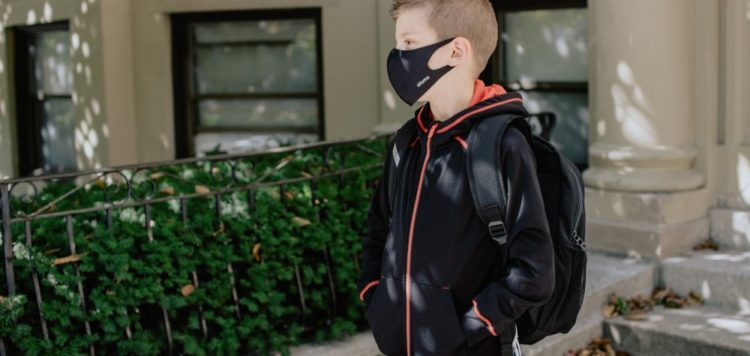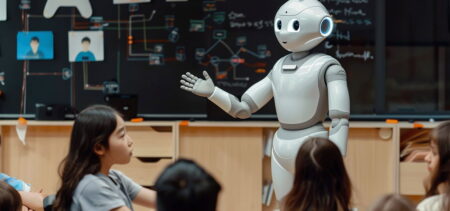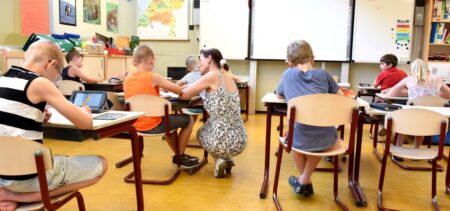It should come as no surprise that the current school year is facing as many problems as the previous one, if not more. With new variants of the COVID-19 virus spreading rapidly worldwide, worries about providing the best learning environment are also on the rise. Children and students have already faced multiple issues when it comes to online and hybrid learning, as the closing of schools impacted most students across the world. Ensuring equal access to education has also become a problem during the pandemic, and continues to disrupt education to this day.
However, before trying to fix the new challenges in education, policy-makers, teachers, and school staff should probably determine which issues are the most important and how long they are expected to last. While problems such as temporary school closures could have a limited local impact, mental problems brought on by isolation and remote learning might stay with us for years to come. Equally important may be the role technology could play in the future of learning, as paper and pencil testing is quickly becoming obsolete. Local challenges are also important, because the new variants of the virus have impacted states and districts differently, and each problem may need its own personalized solution.
Building Resilience During Turbulent Times
According to a UNICEF report, the mental health and well-being of children and young adults could be impacted by COVID-19 for years to come. The United Nations agency provided data showing how more than 14% of the world’s teenagers are now expected to live with a diagnosed mental disorder. Suicide is also an important issue for this age group, as about 46,000 adolescents die from suicide each year.
While it is important for policy-makers around the world to focus on finding new ways of helping children and young adults in their fight against mental disorders, it is equally—if not more—important for teachers, educators, school staff, and parents to understand the needs of teenagers. According to UNICEF, a strategy based on commitment, communication, and action may be the best approach to promote good mental health among children and adolescents around the world, while also protecting the most vulnerable. Understanding mental health issues, talking about them, and addressing them at the right time might prove to be life-saving strategies.
The Future of Education
The COVID-19 pandemic has brought many changes as it disrupted various aspects of peoples’ lives. However, if working remotely was seen by many as a leap forward into the future, the same cannot be said about remote learning. According to British research, almost half of the teachers and educators surveyed reported difficulties in aligning online courses with the school’s curriculum. They also stated that remote classes are more difficult for younger age groups, and that many students lose focus when studying from home.
However, according to the European Commission (EC), online tools are some of the best available in fighting the disruption in education across the European Union (EU). The EC goes on to say that these digital tools ultimately have multiple educational roles, from connecting teachers and students with each other when in separate locations, to providing access to different information and environments, and even to helping the continued professional development of teachers in a flexible way. Although educational systems across the world were probably lacking many digital tools at the start of the COVID-19 pandemic, new technologies and platforms will continue to appear and may well improve the overall result.
Problems Closer to Home
While dealing with mental health disorders and improving online classrooms are global problems, some problems are local—including school mask mandates and other challenges caused by reopening plans. The latter is especially prevalent in New York, where the Alliance for Quality Education says online courses should remain an option for the students and parents who might prefer it, while a Republican state senator is fighting against a universal mask mandate in schools.
New York is not an isolated case. Most American states—and countries across the world—are dealing with similar issues. “We all hoped we would be past COVID by now, but we are not,” said Jasmine Gripper, the executive director of the Alliance for Quality Education, as she promoted the idea that parents should decide what’s best for their children.
Considering the fact that new variants of the virus are still spreading across the world, it’s not surprising that education should be dealing with new problems. Be that as it may, the main problem in the educational sector may be caused by a lack of understanding—and timely action—to address current and potential challenges.














